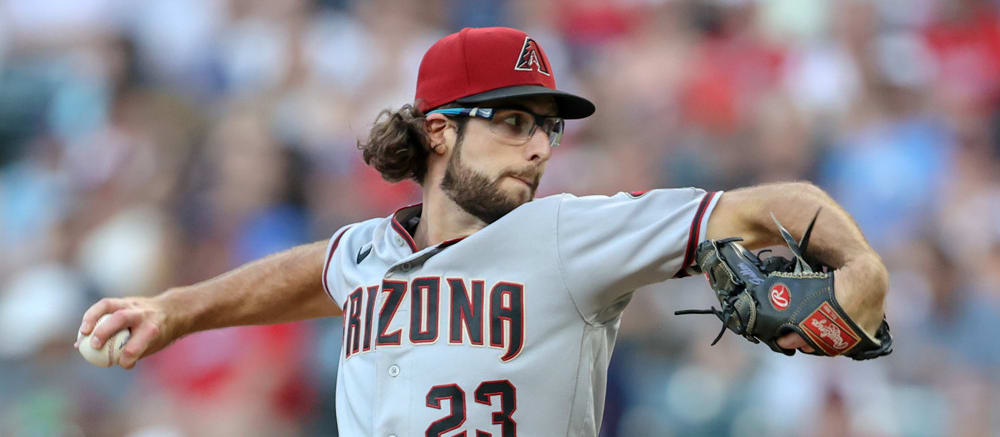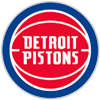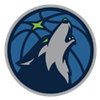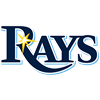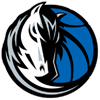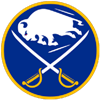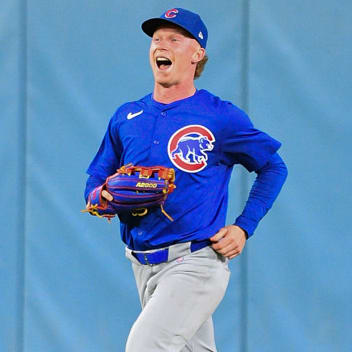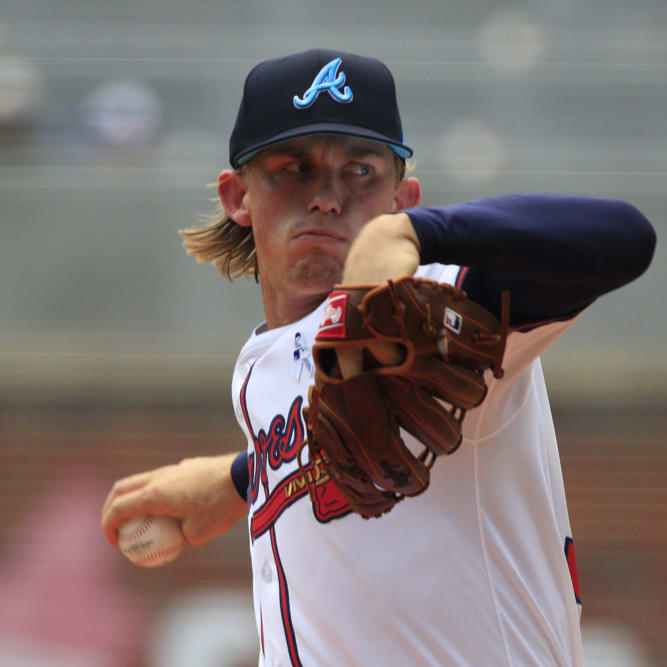For most of the season, the focus of this column is on players whose stocks are changing in ways that appear at least somewhat sustainable. You won't see me discuss runs and RBI directly very often, for example, as the focus is instead on the factors that drive those statistics, namely playing time, lineup position and overall hitting ability. Similarly, I don't mention pitcher wins very often, and I'll rarely cite raw ERA without pairing it with an ERA estimator like FIP or SIERA.
But while the underlying metrics may be what best predict future performance and deserve most of the focus when thinking about potential roster moves, it's the surface stats that affect the actual performance of our fantasy teams. (Unless you play in a process-stats-only fantasy league, in which case I'd love to hear about it.) For that reason, I like to take a look a few times a season at the biggest risers and fallers according to our earned auction values page, regardless of whether those rises and falls look sustainable. If you're like me and can get too into the weeds with the fancy advanced metrics at times, I hope this exercise serves as a reality check regarding whose skills are actually translating into fantasy production.
A couple notes on the methodology here before we get started. Each of the tables below compares a player's earned auction value rank to his ADP rank in all 712 NFBC drafts in the month of March. Risers who are
For most of the season, the focus of this column is on players whose stocks are changing in ways that appear at least somewhat sustainable. You won't see me discuss runs and RBI directly very often, for example, as the focus is instead on the factors that drive those statistics, namely playing time, lineup position and overall hitting ability. Similarly, I don't mention pitcher wins very often, and I'll rarely cite raw ERA without pairing it with an ERA estimator like FIP or SIERA.
But while the underlying metrics may be what best predict future performance and deserve most of the focus when thinking about potential roster moves, it's the surface stats that affect the actual performance of our fantasy teams. (Unless you play in a process-stats-only fantasy league, in which case I'd love to hear about it.) For that reason, I like to take a look a few times a season at the biggest risers and fallers according to our earned auction values page, regardless of whether those rises and falls look sustainable. If you're like me and can get too into the weeds with the fancy advanced metrics at times, I hope this exercise serves as a reality check regarding whose skills are actually translating into fantasy production.
A couple notes on the methodology here before we get started. Each of the tables below compares a player's earned auction value rank to his ADP rank in all 712 NFBC drafts in the month of March. Risers who are still outside the top 450 — and therefore still unrosterable in 15-team leagues — are excluded, as are fallers who began outside that range. For the fallers, I've ranked players by raw spots dropped, but I've left out players who have missed at least half the season due to injury, as it's not particularly informative to tell you that players don't provide fantasy value while hurt. (Players who were demoted remain fair game.) For the risers, I've ranked players by their percentage of possible spots gained rather than by the raw number of spots they jumped, on the theory that someone who rises from 100th to 10th has accomplished something much more impressive than someone who rises from 500th to 410th. All rankings are through the end of April, so Monday's games aren't included.
Risers
Starting Pitchers
| Player | Team | ADP Rank | Earned Value Rank | % of Possible Gain |
|---|---|---|---|---|
| Clayton Kershaw | LAD | 114 | 7 | 94.7% |
| Justin Steele | CHC | 287 | 30 | 89.9% |
| Sonny Gray | MIN | 213 | 23 | 89.6% |
| Zac Gallen | ARI | 71 | 9 | 88.6% |
| Vince Velasquez | PIT | 707 | 93 | 87.0% |
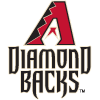 Zac Gallen, Diamondbacks: The Diamondbacks finished April just half a game back of the Dodgers for the NL West lead, making the case that they could be this year's surprise team, one which jumps to competitiveness a year early much like the Orioles did last year. The Corbin Carroll-led youth movement deserves much of the credit for that, but Gallen, who's been with the Diamondbacks since 2019, deserves a fair portion himself. He finished an outstanding first month having won four of his six starts while posting a 2.15 ERA and 0.77 WHIP, backing up those figures with an outstanding 36.2 percent strikeout rate and 3.5 percent walk rate. This month-long view in many ways understates the run Gallen is on at the moment. He allowed nine earned runs in 10.2 innings in his first two starts before tossing 27 scoreless frames with a 41:1 K:BB over his last four trips to the mound. Even with those first two outings included, Gallen sits third among qualified starters in FIP (1.85), second in SIERA (2.48) and first in xFIP (2.26)
Zac Gallen, Diamondbacks: The Diamondbacks finished April just half a game back of the Dodgers for the NL West lead, making the case that they could be this year's surprise team, one which jumps to competitiveness a year early much like the Orioles did last year. The Corbin Carroll-led youth movement deserves much of the credit for that, but Gallen, who's been with the Diamondbacks since 2019, deserves a fair portion himself. He finished an outstanding first month having won four of his six starts while posting a 2.15 ERA and 0.77 WHIP, backing up those figures with an outstanding 36.2 percent strikeout rate and 3.5 percent walk rate. This month-long view in many ways understates the run Gallen is on at the moment. He allowed nine earned runs in 10.2 innings in his first two starts before tossing 27 scoreless frames with a 41:1 K:BB over his last four trips to the mound. Even with those first two outings included, Gallen sits third among qualified starters in FIP (1.85), second in SIERA (2.48) and first in xFIP (2.26)
Relief Pitchers
| Player | Team | ADP Rank | Earned Value Rank | % of Possible Gain |
|---|---|---|---|---|
| Mason Thompson | WAS | 1,155* | 117 | 89.9% |
| Yennier Cano | BAL | 1,155 | 141 | 87.9% |
| Mike Baumann | BAL | 1,000 | 151 | 85.0% |
| Michael Tonkin | ATL | 1,155 | 185 | 84.1% |
| Josh Winckowski | BOS | 1,027 | 187 | 81.9% |
* 1,154 players were selected in at least one NFBC draft in March. I've assigned an ADP rank of 1,155 to everyone who went undrafted.
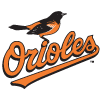 Yennier Cano, Orioles: The largest April reliever risers using this methodology are nearly always pitchers who were complete afterthoughts during draft season but put up a strong first month while stumbling into a win or a save or two. (If I restricted this category to just relievers who have at least three saves, the list would be A.J. Puk, Jose Alvarado, Andrew Chafin, David Bednar and Paul Sewald.) Cano fits that description as well as the rest of this non-descript list does, but his early dominance makes him easily the most interesting. He put together one of the best months you'll ever see from a reliever, allowing no runs, no hits and no walks in 11 innings of work while striking out 36.4 percent of opposing batters. A hit batsman is all that stands between him and perfection thus far; not bad for a 29-year-old who had more earned runs (23) than innings pitched (18) at the MLB level before this year and who spent the first two weeks of this season in the minors. Felix Bautista remains a large obstacle blocking Cano's path to regular saves, though he's managed two already and is an excellent option in any league that's large enough that a handful of setup men are rostered.
Yennier Cano, Orioles: The largest April reliever risers using this methodology are nearly always pitchers who were complete afterthoughts during draft season but put up a strong first month while stumbling into a win or a save or two. (If I restricted this category to just relievers who have at least three saves, the list would be A.J. Puk, Jose Alvarado, Andrew Chafin, David Bednar and Paul Sewald.) Cano fits that description as well as the rest of this non-descript list does, but his early dominance makes him easily the most interesting. He put together one of the best months you'll ever see from a reliever, allowing no runs, no hits and no walks in 11 innings of work while striking out 36.4 percent of opposing batters. A hit batsman is all that stands between him and perfection thus far; not bad for a 29-year-old who had more earned runs (23) than innings pitched (18) at the MLB level before this year and who spent the first two weeks of this season in the minors. Felix Bautista remains a large obstacle blocking Cano's path to regular saves, though he's managed two already and is an excellent option in any league that's large enough that a handful of setup men are rostered.
Catchers
| Player | Team | ADP Rank | Earned Value Rank | % of Possible Gain |
|---|---|---|---|---|
| Jonah Heim | TEX | 232 | 46 | 80.5% |
| Yan Gomes | CHC | 441 | 121 | 72.7% |
| Jason Delay | PIT | 1,155 | 338 | 70.8% |
| Blake Sabol | SFG | 417 | 203 | 51.4% |
| Shea Langeliers | OAK | 264 | 132 | 50.2% |
 Jonah Heim, Rangers: Heim was the 17th catcher off the board in March NFBC drafts, making him a quality second catcher but nothing more than that. At the end of April, he's been the second most valuable backstop in the entire league. He finished the month tied for second at the position with five homers, tied for first with 16 runs and alone at the top with 22 RBI. He probably won't remain quite so high on the counting-stats leaderboards unless he sees an uptick in playing time, as he ended April merely 14th in plate appearances (88), but his underlying numbers back the notion that he's hitting the ball better than ever. His 99 wRC+ last season was perfectly acceptable for a backstop, but he leads all regular backstops with a 169 wRC+ through the end of April, the product of a .303/.386/.592 slash line. He's cut his strikeout rate from 19.3 percent to 15.9 percent while nearly doubling his barrel rate, which has gone from 6.9 percent to 12.7 percent.
Jonah Heim, Rangers: Heim was the 17th catcher off the board in March NFBC drafts, making him a quality second catcher but nothing more than that. At the end of April, he's been the second most valuable backstop in the entire league. He finished the month tied for second at the position with five homers, tied for first with 16 runs and alone at the top with 22 RBI. He probably won't remain quite so high on the counting-stats leaderboards unless he sees an uptick in playing time, as he ended April merely 14th in plate appearances (88), but his underlying numbers back the notion that he's hitting the ball better than ever. His 99 wRC+ last season was perfectly acceptable for a backstop, but he leads all regular backstops with a 169 wRC+ through the end of April, the product of a .303/.386/.592 slash line. He's cut his strikeout rate from 19.3 percent to 15.9 percent while nearly doubling his barrel rate, which has gone from 6.9 percent to 12.7 percent.
Corner Infielders
| Player | Team | Pos | ADP Rank | Earned Value Rank | % of Possible Gain |
|---|---|---|---|---|---|
| Patrick Wisdom | CHC | 3B | 428 | 26 | 94.1% |
| Matt Chapman | TOR | 3B | 148 | 13 | 91.8% |
| Yandy Diaz | TBR | 1B/3B | 266 | 27 | 90.2% |
| Taylor Walls | TBR | 2B/SS/3B | 584 | 62 | 89.5% |
| Max Muncy | LAD | 3B | 119 | 18 | 85.6% |
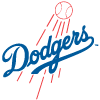 Max Muncy, Dodgers: After a winter full of consternation among drafters about the quality of options at the hot corner, it's interesting to see that each of the top five corner infield risers qualifies at third base. This group predictably features plenty of pop, but Muncy paces the quintet and the entire league with 11 homers. Just as importantly, he owns a respectable .238 batting average after sitting below .200 in that category in two of the last three seasons. If you're lucky enough to have him in an OBP league, his 21.4 percent walk rate gives him a .408 on-base percentage, vaulting him all the way up to fifth in the earned value rankings. This strong April comes despite his 27.2 percent strikeout rate, which is tied for Muncy's worst mark since his rookie season, but that's only three points higher than his career 24.2 percent rate and comes with an outstanding 26.9 percent barrel rate.
Max Muncy, Dodgers: After a winter full of consternation among drafters about the quality of options at the hot corner, it's interesting to see that each of the top five corner infield risers qualifies at third base. This group predictably features plenty of pop, but Muncy paces the quintet and the entire league with 11 homers. Just as importantly, he owns a respectable .238 batting average after sitting below .200 in that category in two of the last three seasons. If you're lucky enough to have him in an OBP league, his 21.4 percent walk rate gives him a .408 on-base percentage, vaulting him all the way up to fifth in the earned value rankings. This strong April comes despite his 27.2 percent strikeout rate, which is tied for Muncy's worst mark since his rookie season, but that's only three points higher than his career 24.2 percent rate and comes with an outstanding 26.9 percent barrel rate.
Middle Infielders
| Player | Team | Pos | ADP Rank | Earned Value Rank | % of Possible Gain |
|---|---|---|---|---|---|
| Jorge Mateo | BAL | SS | 260 | 3 | 99.2% |
| Nico Hoerner | CHC | 2B/SS | 133 | 6 | 96.2% |
| Geraldo Perdomo | ARI | SS | 769 | 76 | 90.2% |
| Taylor Walls | TBR | 2B/SS/3B | 584 | 62 | 89.5% |
| Thairo Estrada | SFG | 2B/SS | 158 | 21 | 87.3% |
 Jorge Mateo, Orioles: Mateo was a divisive player during draft season. With regular playing time, he was as good a bet as anyone to lead the league in steals, as he stole 35 bags in 150 games last season. But while he earned that regular playing time in part due to strong defense last season, he managed just an 82 wRC+, a near match for his 83 wRC+ the year prior. With the option to shift Gunnar Henderson to shortstop as well as the presence of prospects Joey Ortiz and Jordan Westburg waiting in the minors, there was no guarantee Mateo would hit well enough to keep his starting job, and in turn, no guarantee he'd keep providing steals. Instead, the opposite has happened. Not only is he tied for sixth with 10 steals, he's hitting .347/.395/.667 with six homers. He's cut his strikeout rate nearly in half to an excellent 14.5 percent and has a career-best 46.9 percent hard hit rate. Who knows how much will stick, but his hot start hasn't been anything close to a mirage.
Jorge Mateo, Orioles: Mateo was a divisive player during draft season. With regular playing time, he was as good a bet as anyone to lead the league in steals, as he stole 35 bags in 150 games last season. But while he earned that regular playing time in part due to strong defense last season, he managed just an 82 wRC+, a near match for his 83 wRC+ the year prior. With the option to shift Gunnar Henderson to shortstop as well as the presence of prospects Joey Ortiz and Jordan Westburg waiting in the minors, there was no guarantee Mateo would hit well enough to keep his starting job, and in turn, no guarantee he'd keep providing steals. Instead, the opposite has happened. Not only is he tied for sixth with 10 steals, he's hitting .347/.395/.667 with six homers. He's cut his strikeout rate nearly in half to an excellent 14.5 percent and has a career-best 46.9 percent hard hit rate. Who knows how much will stick, but his hot start hasn't been anything close to a mirage.
Outfielders
| Player | Team | Pos | ADP Rank | Earned Value Rank | % of Possible Gain |
|---|---|---|---|---|---|
| Brent Rooker | OAK | OF | 893 | 16 | 98.3% |
| Randy Arozarena | TBR | OF | 34 | 2 | 97.0% |
| Josh Lowe | TBR | OF | 427 | 19 | 95.8% |
| James Outman | LAD | OF | 371 | 17 | 95.7% |
| Cody Bellinger | CHC | OF | 179 | 12 | 93.8% |
Note: Ronald Acuna gained zero spots but also gained as many spots as possible, as he sits first in earned value after finishing March ranked first in ADP. I won't include him here for fear of angering any mathematicians who might be reading, but I didn't want his impressive month to go unmentioned.
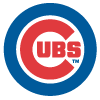 Cody Bellinger, Cubs: I've been trying not to get overly excited about Bellinger, having previously been misled by what looked like hints of a bounce-back in the early part of last season, but it's hard not to be encouraged by what he's shown thus far. After slashing .193/.256/.355 with 19 homers and 11 steals per 600 plate appearances over his last two seasons as a Dodger, he's hit .297/.371/.604 with seven homers and four steals in his first month as a Cub, totals that prorate to 40 homers and 23 steals in 600 trips to the plate. His Statcast data does suggest he's overachieving by a fair amount, but even falling off to his .254 xBA and .473 xSLG would represent a massive improvement. Perhaps most encouraging of all is Bellinger's 16.2 percent strikeout rate, down nearly 11 points from his 27.1 percent mark over the last two seasons. To accomplish that, he's cut his reach rate from 34.8 percent in those two years to 29.6 percent this season, while increasing his overall contact rate from 74.6 percent to 81.4 percent. He may not be all the way back, but it sure looks like he's crawled out of the pit.
Cody Bellinger, Cubs: I've been trying not to get overly excited about Bellinger, having previously been misled by what looked like hints of a bounce-back in the early part of last season, but it's hard not to be encouraged by what he's shown thus far. After slashing .193/.256/.355 with 19 homers and 11 steals per 600 plate appearances over his last two seasons as a Dodger, he's hit .297/.371/.604 with seven homers and four steals in his first month as a Cub, totals that prorate to 40 homers and 23 steals in 600 trips to the plate. His Statcast data does suggest he's overachieving by a fair amount, but even falling off to his .254 xBA and .473 xSLG would represent a massive improvement. Perhaps most encouraging of all is Bellinger's 16.2 percent strikeout rate, down nearly 11 points from his 27.1 percent mark over the last two seasons. To accomplish that, he's cut his reach rate from 34.8 percent in those two years to 29.6 percent this season, while increasing his overall contact rate from 74.6 percent to 81.4 percent. He may not be all the way back, but it sure looks like he's crawled out of the pit.
Fallers
Starting Pitchers
| Player | Team | ADP Rank | Earned Value Rank | Spots Dropped |
|---|---|---|---|---|
| Lance Lynn | CWS | 127 | 918 | 791 |
| Blake Snell | SDP | 107 | 864 | 757 |
| Brady Singer | KCR | 189 | 875 | 686 |
| Michael Kopech | CWS | 269 | 941 | 672 |
| Kenta Maeda | MIN | 299 | 939 | 640 |
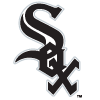 Michael Kopech, White Sox: At what point do the White Sox move Kopech back to the bullpen? His 3.54 ERA last season suggests he's a solid big-league starter, but none of his 21.3 percent strikeout rate, 11.5 percent walk rate or 35.7 percent groundball rate backed up that figure. Those underlying numbers haven't moved much this season, with slight increases in his strikeout rate and groundball rate being offset by a walk rate that's jumped to 13.4 percent, but his ERA finished April at 7.01. Kopech has never shown control as a starter in his entire professional career, posting double-digit walk rates every season even as a minor leaguer, so at some point the conclusion has to be to move him to the pen. There's no real incentive for the 8-21 White Sox to give up on him, as the organization also lacks the prospects in the minors to push for his job, but there's also little reason to believe the team is about to fix him. If you aren't starting him in his two-start week this week (home against Minnesota and at Cincinnati), he probably doesn't need to remain on your roster.
Michael Kopech, White Sox: At what point do the White Sox move Kopech back to the bullpen? His 3.54 ERA last season suggests he's a solid big-league starter, but none of his 21.3 percent strikeout rate, 11.5 percent walk rate or 35.7 percent groundball rate backed up that figure. Those underlying numbers haven't moved much this season, with slight increases in his strikeout rate and groundball rate being offset by a walk rate that's jumped to 13.4 percent, but his ERA finished April at 7.01. Kopech has never shown control as a starter in his entire professional career, posting double-digit walk rates every season even as a minor leaguer, so at some point the conclusion has to be to move him to the pen. There's no real incentive for the 8-21 White Sox to give up on him, as the organization also lacks the prospects in the minors to push for his job, but there's also little reason to believe the team is about to fix him. If you aren't starting him in his two-start week this week (home against Minnesota and at Cincinnati), he probably doesn't need to remain on your roster.
Relief Pitchers
| Player | Team | ADP Rank | Earned Value Rank | Spots Dropped |
|---|---|---|---|---|
| Trevor May | OAK | 345 | 834 | 489 |
| Ryan Helsley | STL | 82 | 501 | 419 |
| Seranthony Dominguez | PHI | 283 | 692 | 409 |
| Taylor Rogers | SFG | 333 | 740 | 407 |
| Reynaldo Lopez | CWS | 314 | 715 | 401 |
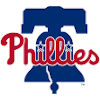 Seranthony Dominguez, Phillies: Helsley and his three saves look worrisome, but the Cardinals have too much talent to have one of the franchise's worst starts in decades, and when they eventually start winning, that total will shoot up. He has all but one of his team's four saves this season, but Dominguez has earned zero of the Phillies' eight. The 28-year-old righty has failed to make his case for saves this season despite preseason expectations and has been the worst of the team's four high-leverage relievers this season:
Seranthony Dominguez, Phillies: Helsley and his three saves look worrisome, but the Cardinals have too much talent to have one of the franchise's worst starts in decades, and when they eventually start winning, that total will shoot up. He has all but one of his team's four saves this season, but Dominguez has earned zero of the Phillies' eight. The 28-year-old righty has failed to make his case for saves this season despite preseason expectations and has been the worst of the team's four high-leverage relievers this season:
| Pitcher | Throws | SV | HLD | W | ERA | SIERA | K% | BB% |
|---|---|---|---|---|---|---|---|---|
| Jose Alvarado | L | 5 | 3 | 0 | 0.73 | 0.44 | 55.8 | 0.0 |
| Craig Kimbrel | R | 3 | 3 | 1 | 4.09 | 3.50 | 34.1 | 13.6 |
| Gregory Soto | L | 0 | 6 | 1 | 2.84 | 4.06 | 32.7 | 16.3 |
| Seranthony Dominguez | R | 0 | 3 | 1 | 6.35 | 4.34 | 21.1 | 10.5 |
Alvarado clearly leads the group thanks to his unreal 24:0 K:BB in 12.1 innings through the end of April, and while control issues for Kimbrel and Soto mean they're not exactly trustworthy, they've still been better than Dominguez. It's worth noting, however, that he's been markedly different in his last six outings compared to his first seven. He started the year with a 4:5 K:BB and 10 runs allowed in 5.2 innings. Since then, he has an 8:1 K:BB in 5.2 scoreless frames, reminding everyone that reliever sample sizes are still incredibly small.
Catchers
| Player | Team | ADP Rank | Earned Value Rank | Spots Dropped |
|---|---|---|---|---|
| MJ Melendez | KC | 92 | 593 | 501 |
| Joey Bart | SFG | 329 | 824 | 495 |
| Austin Nola | SDP | 410 | 857 | 447 |
| Eric Haase | DET | 259 | 689 | 430 |
| Francisco Alvarez | NYM | 411 | 814 | 403 |
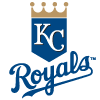 MJ Melendez, Royals: The result was merely a .217 average and 18 home runs last season, but there was plenty to be encouraged about in Melendez's rookie season. His 24.5 percent strikeout rate was a bit high, but when combined with a 12.4 percent walk rate and 10.4 percent barrel rate, it made for a great platform to build on for any young hitter, let alone a catcher. His sophomore April represents a clear step back, however, as he ended the month hitting .174/.267/.315 with two homers for a 7-22 Royals team. His barrel rate (16.1 percent) is actually up, but his 35.2 percent strikeout rate means he's not getting to his power nearly often enough. His chase rate has jumped nearly five points to 32.5 percent, while his contact rate slipped from slightly below-average to 61.0 percent, the second worst mark among qualified hitters. He has plenty of time to prove this is nothing but a cold month, but it's not a good start for a player who entered the year on an upward trajectory.
MJ Melendez, Royals: The result was merely a .217 average and 18 home runs last season, but there was plenty to be encouraged about in Melendez's rookie season. His 24.5 percent strikeout rate was a bit high, but when combined with a 12.4 percent walk rate and 10.4 percent barrel rate, it made for a great platform to build on for any young hitter, let alone a catcher. His sophomore April represents a clear step back, however, as he ended the month hitting .174/.267/.315 with two homers for a 7-22 Royals team. His barrel rate (16.1 percent) is actually up, but his 35.2 percent strikeout rate means he's not getting to his power nearly often enough. His chase rate has jumped nearly five points to 32.5 percent, while his contact rate slipped from slightly below-average to 61.0 percent, the second worst mark among qualified hitters. He has plenty of time to prove this is nothing but a cold month, but it's not a good start for a player who entered the year on an upward trajectory.
Corner Infielders
| Player | Team | Pos | ADP Rank | Earned Value Rank | Spots Dropped |
|---|---|---|---|---|---|
| Jean Segura | MIA | 2B/3B | 238 | 743 | 505 |
| Jose Abreu | HOU | 1B | 84 | 568 | 484 |
| Brandon Belt | TOR | 1B | 331 | 787 | 456 |
| Gunnar Henderson | BAL | 3B | 85 | 497 | 412 |
| Triston Casas | BOS | 1B | 207 | 558 | 351 |
 Gunnar Henderson, Orioles: Speaking of young hitters who have stumbled after showing promise in their first taste of the big leagues, Henderson finished his first major-league April as a .189 hitter. A great eye (18.5 percent walk rate) has pushed his on-base percentage to .348 and his wRC+ to a passable 97, but he's homered just twice and stolen just one base, giving him little fantasy value in most formats. Just like Melendez, contact is the main problem here. Henderson's 25.8 percent strikeout rate in his 34-game debut last season was a bit high, but his 31.5 percent mark this season is unquestionably a problem. Henderson had a career 26.4 percent strikeout rate in the minors overall and an identical mark in 65 Triple-A games, so at some point, the 18.3 percent strikeout rate in 47 Double-A games at the start of last season that helped vault him to a new tier of prospect starts to look more like an outlier. He's 21 years old and extremely talented, so it's hard to bet against him, but there's no guarantee his first big-league season goes as smoothly as his draft-day price suggested it could.
Gunnar Henderson, Orioles: Speaking of young hitters who have stumbled after showing promise in their first taste of the big leagues, Henderson finished his first major-league April as a .189 hitter. A great eye (18.5 percent walk rate) has pushed his on-base percentage to .348 and his wRC+ to a passable 97, but he's homered just twice and stolen just one base, giving him little fantasy value in most formats. Just like Melendez, contact is the main problem here. Henderson's 25.8 percent strikeout rate in his 34-game debut last season was a bit high, but his 31.5 percent mark this season is unquestionably a problem. Henderson had a career 26.4 percent strikeout rate in the minors overall and an identical mark in 65 Triple-A games, so at some point, the 18.3 percent strikeout rate in 47 Double-A games at the start of last season that helped vault him to a new tier of prospect starts to look more like an outlier. He's 21 years old and extremely talented, so it's hard to bet against him, but there's no guarantee his first big-league season goes as smoothly as his draft-day price suggested it could.
Middle Infielders
| Player | Team | Pos | ADP Rank | Earned Value Rank | Spots Dropped |
|---|---|---|---|---|---|
| Nick Gordon | MIN | 2B/OF | 297 | 893 | 596 |
| Kolten Wong | SEA | 2B | 263 | 840 | 577 |
| Michael Massey | KCR | 2B | 337 | 861 | 524 |
| Jean Segura | MIA | 2B/3B | 238 | 743 | 505 |
| Oswald Peraza | NYY | SS | 330 | 773 | 443 |
 Michael Massey, Royals: It's a pretty punchless group — Massey's three barrels lead the set, with Gordon and Segura on two, and Wong and Peraza yet to manage even one — but that was largely to be expected for most of these hitters. Massey, however, managed a 13.0 percent barrel rate in 194 plate appearances last season, so dreams of him far outpacing his four homers made him a justifiable sleeper. His 6.1 percent barrel rate is a problem, but it isn't his biggest one. He's also seen his strikeout rate leap from 23.7 percent to 38.3 percent, striking out 31 times to go with just a single walk. The result has been a .167/.173/.179 slash line, a -13 wRC+ and -0.6 WAR in just a month worth of games. While we generally don't want to overreact to one bad month, given that Massey's appeal rested on such tenuous grounds to begin with, anyone who hasn't cut bait already can safely do so. It was worth a look to see if his small-sample barrel rate mattered more than his unremarkable results and lack of prospect pedigree, but the early answer has been a resounding "no."
Michael Massey, Royals: It's a pretty punchless group — Massey's three barrels lead the set, with Gordon and Segura on two, and Wong and Peraza yet to manage even one — but that was largely to be expected for most of these hitters. Massey, however, managed a 13.0 percent barrel rate in 194 plate appearances last season, so dreams of him far outpacing his four homers made him a justifiable sleeper. His 6.1 percent barrel rate is a problem, but it isn't his biggest one. He's also seen his strikeout rate leap from 23.7 percent to 38.3 percent, striking out 31 times to go with just a single walk. The result has been a .167/.173/.179 slash line, a -13 wRC+ and -0.6 WAR in just a month worth of games. While we generally don't want to overreact to one bad month, given that Massey's appeal rested on such tenuous grounds to begin with, anyone who hasn't cut bait already can safely do so. It was worth a look to see if his small-sample barrel rate mattered more than his unremarkable results and lack of prospect pedigree, but the early answer has been a resounding "no."
Outfielders
| Player | Team | Pos | ADP Rank | Earned Value Rank | Spots Dropped |
|---|---|---|---|---|---|
| Marcell Ozuna | ATL | OF | 298 | 944 | 646 |
| Jake McCarthy | ARI | OF | 105 | 744 | 639 |
| Oscar Gonzalez | CLE | OF | 215 | 827 | 612 |
| Nick Gordon | MIN | 2B/OF | 297 | 983 | 596 |
| Will Benson | CIN | OF | 435 | 953 | 518 |
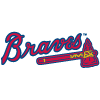 Marcell Ozuna, Atlanta: Ozuna was hardly a hot commodity during draft season, as his ADP indicates, but early indications are that any interest he received was misplaced. After hitting .222/.278/.397 over the last two seasons — a stretch which included a suspension for domestic violence and an arrest for DUI — there were far more reasons to dislike Ozuna in his age-32 season than there were reasons to like him, though you could at least point to a 12.1 percent barrel rate over that poor run as evidence that some of his skills remained. He's actually maintained a nearly identical 12.2 percent barrel rate thus far this season, and his 26.9 percent strikeout rate is bad but not horrible, but the net result has been a pathetic .085/.194/.203 slash line. He's started just three of Atlanta's last 11 games and none of the last four, and it would hardly be a surprise to see him designated for assignment soon, quite possibly never to return at the big-league level.
Marcell Ozuna, Atlanta: Ozuna was hardly a hot commodity during draft season, as his ADP indicates, but early indications are that any interest he received was misplaced. After hitting .222/.278/.397 over the last two seasons — a stretch which included a suspension for domestic violence and an arrest for DUI — there were far more reasons to dislike Ozuna in his age-32 season than there were reasons to like him, though you could at least point to a 12.1 percent barrel rate over that poor run as evidence that some of his skills remained. He's actually maintained a nearly identical 12.2 percent barrel rate thus far this season, and his 26.9 percent strikeout rate is bad but not horrible, but the net result has been a pathetic .085/.194/.203 slash line. He's started just three of Atlanta's last 11 games and none of the last four, and it would hardly be a surprise to see him designated for assignment soon, quite possibly never to return at the big-league level.


